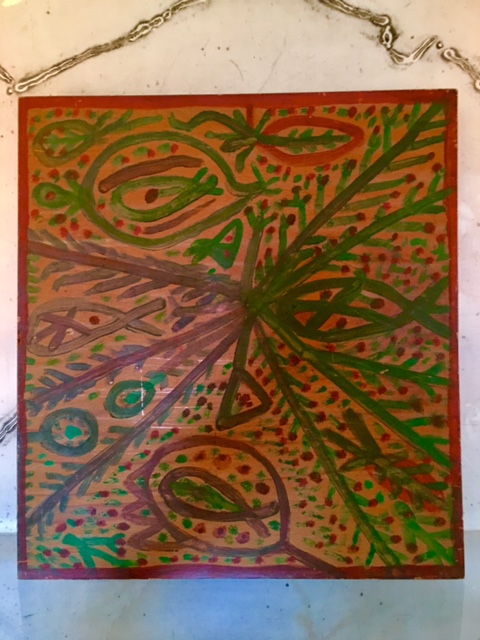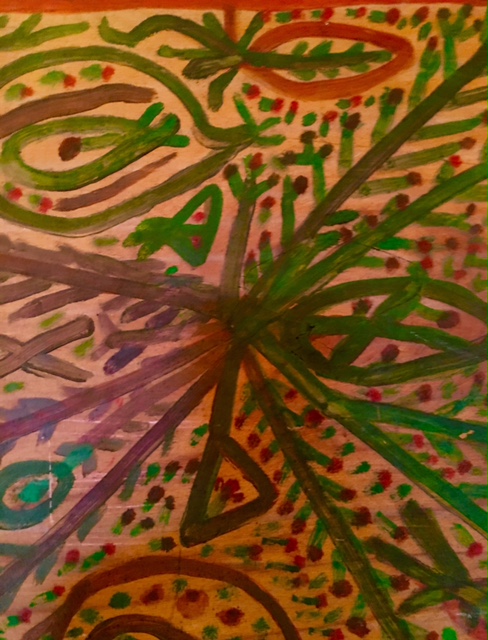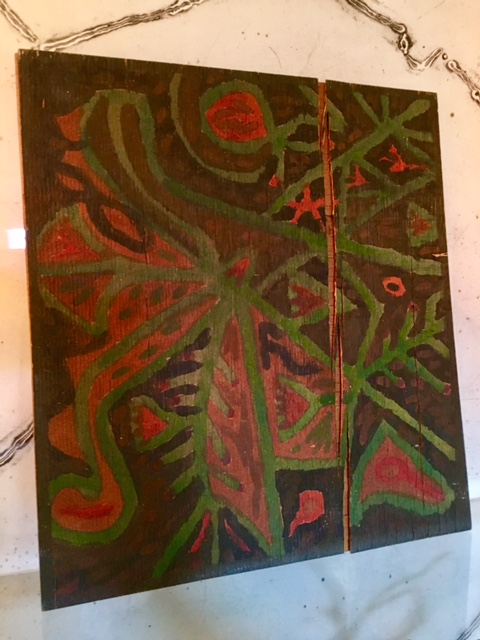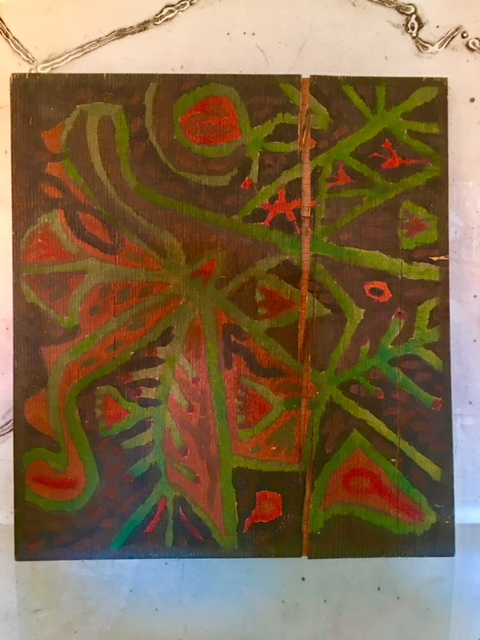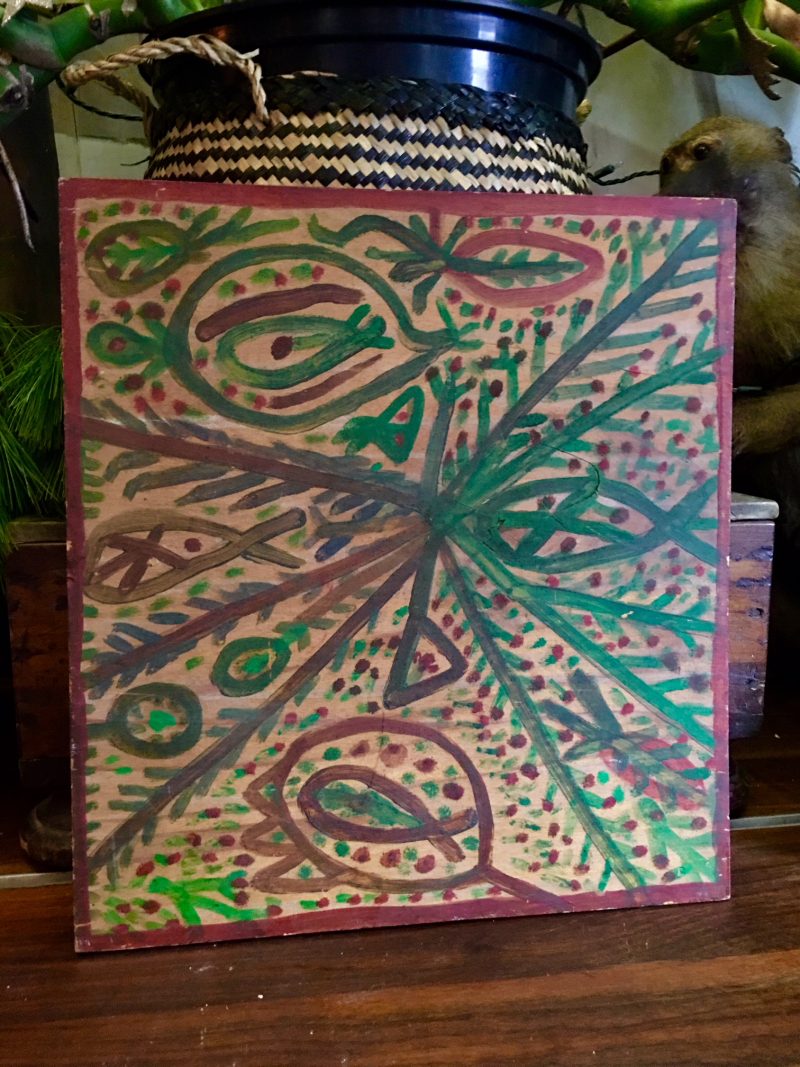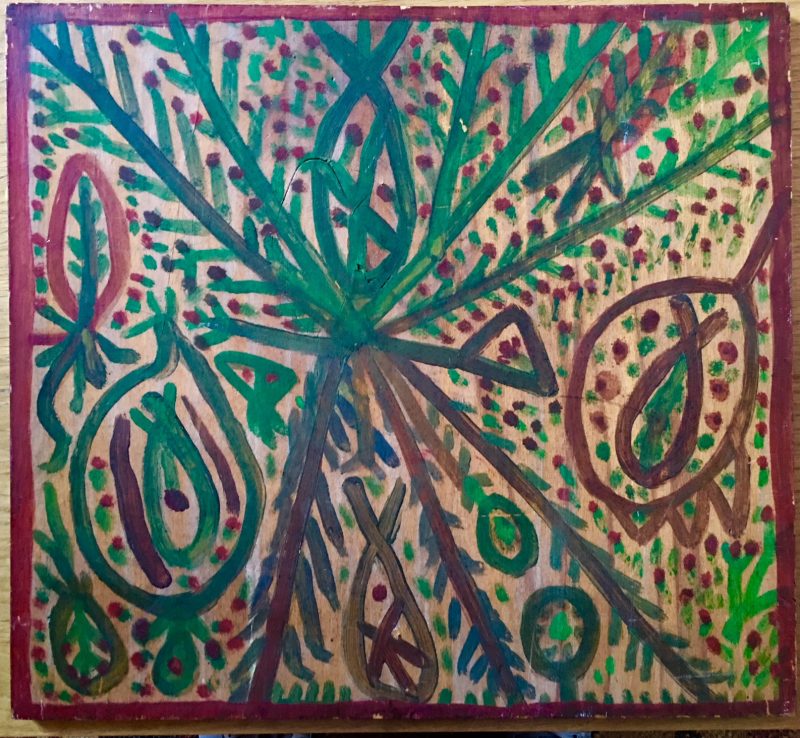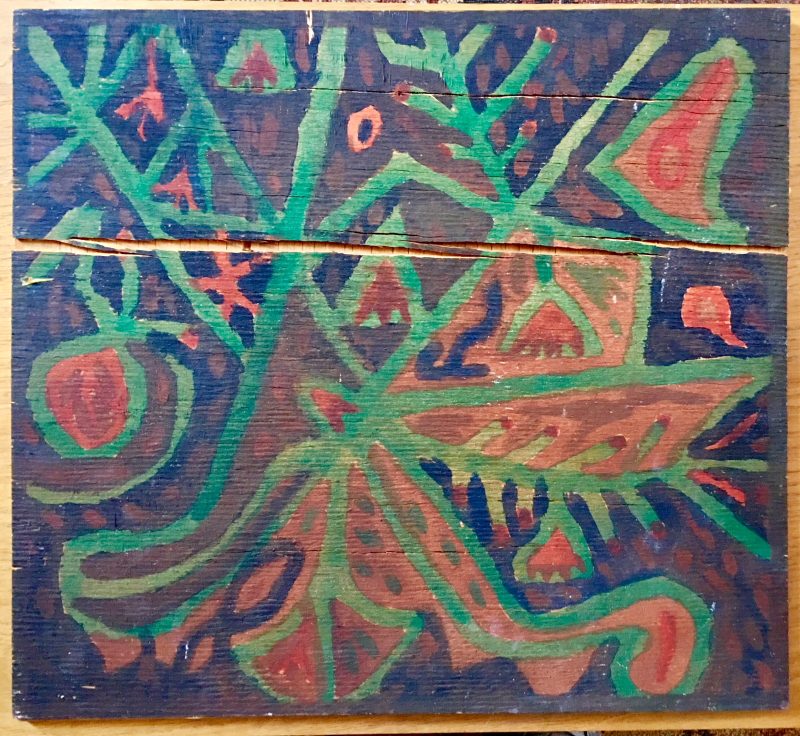Outsider Painting by Rigu Elena, Romania
Authentic Outsider Painting on Found Wood by Rigu Elena, Romania. Grandmother of the artist Theo Pelmus, Romania.
Watercolor & found paints on found piece of wood. Double sided. One side in great condition. The verso painting has cracking in the wood, which adds to the character. Unique & beautiful piece. Measures 17.5″ width x 16″ height x 1/4″ depth. Inscribed/signed on edge of the painting: ‘RIGU ELENA / PLOIESTI / ROMANIA / 2005’.
$400.
The term “Outsider Art” has been kicked around, shifted, made into movies and possibly become meaningless since it was coined by art critic Roger Cardinal in 1972 as a kind of English equivalent to the French term, Art Brut. Generally thought of as art operating outside of the artistic fashion of the day, it has variously been interpreted to include (or exclude): art made by children, art made by the insane, art by untrained artists or by artists who don’t live in major cities, art by alien abductees, art by the incarcerated, etc.
Ploiești (; older spelling: Ploești) is the county seat of Prahova County and lies in the historical region of Wallachia in Romania. The city is located north of Bucharest. The area of the city is around 60 km. It borders the Blejoi village in the north, Bărcănești and Brazi villages in the south, Târgșoru Vechi in the west and Bucov village in the east. Ploiești has direct access to the Prahova Valley, one of the most important alpine tourism areas in Romania.
Ploiești is an important transport hub, linking Bucharest with Transylvania and Moldavia. According to the 2011 Romanian census, there were 201,226 people living within the city of Ploiești, making it the 9th most populous city in Romania.
– See more at: http://findwords.info/term/ploiesti#sthash.XOGW4ia9.dpuf
|
What is Outsider Art:
Outsider Art is art by self-taught or naïve art makers. Typically, those labeled as outsider artists have little or no contact with the mainstream art world or art institutions. In many cases, their work is discovered only after their deaths. Often, outsider art illustrates extreme mental states, unconventional ideas, or elaborate fantasy worlds.
The term outsider art was coined by art critic Roger Cardinal in 1972 as an English synonym for art brut (French: [aʁ bʁyt], “raw art” or “rough art”), a label created by French artistJean Dubuffet to describe art created outside the boundaries of official culture; Dubuffet focused particularly on art by those on the outside of the established art scene, using as examples psychiatric hospital patients and children.
Outsider art has emerged as a successful art marketing category; an annual Outsider Art Fair has taken place in New York since 1993, and there are at least two regularly published journals dedicated to the subject. The term is sometimes misapplied as a catch-all marketing label for art created by people who are outside the mainstream “art world” or “art gallery system”, regardless of their circumstances or the content of their work. A more specific term, “outsider music“, was later adapted for musicians.
